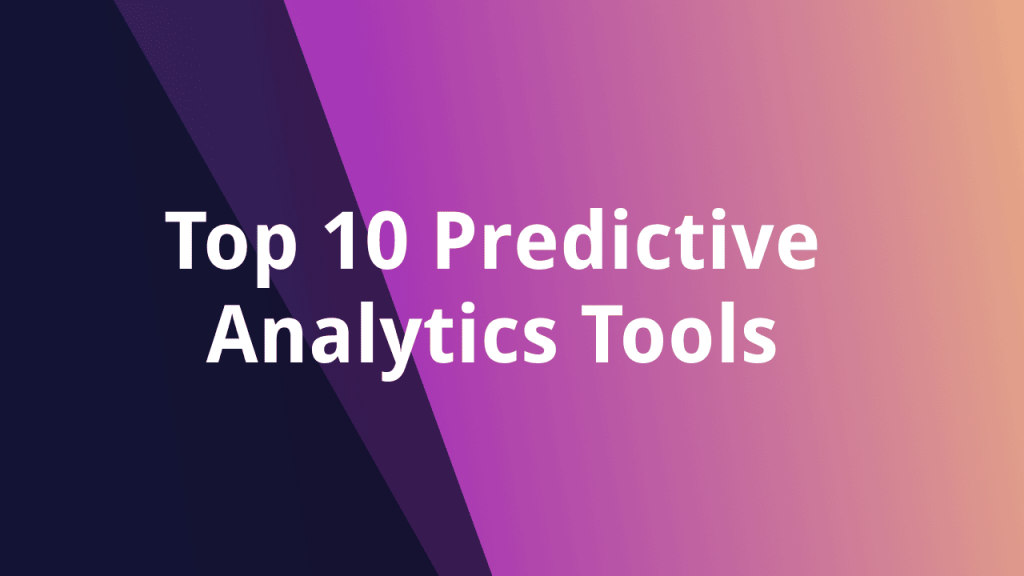
Are you looking for ways to make better business decisions? Predictive analytics can help. This powerful tool uses data and algorithms to forecast future outcomes and trends.
But with so many predictive analytics tools available, it can be hard to know which ones to choose. In this article, we’ll explore some of the most popular options and help you decide which one is right for your needs.
What Is Predictive Analytics?
Before we dive into the tools themselves, let’s take a moment to define what predictive analytics actually is.
At its core, predictive analytics is the practice of using data, statistical algorithms, and machine learning techniques to identify the likelihood of future outcomes based on historical data. In other words, it helps you make predictions about what’s likely to happen in the future based on what’s happened in the past.
Predictive analytics can be applied to a wide range of industries and use cases, from finance and healthcare to marketing and sales.
Popular Predictive Analytics Tools
Now that we have a better understanding of what predictive analytics is, let’s take a look at some of the most popular tools available.
1. IBM Watson Studio
IBM Watson Studio is a cloud-based platform that offers a range of tools for data preparation, model development, and deployment. It uses machine learning algorithms to analyze data and make predictions about future outcomes.
One of the key benefits of IBM Watson Studio is its ease of use. It offers a drag-and-drop interface that makes it easy to build and deploy predictive models without needing to know how to code.
2. Google Cloud AutoML
Google Cloud AutoML is another cloud-based platform that offers a range of machine learning tools. It’s designed to be easy to use, even for users with no prior machine learning experience.
One of the standout features of Google Cloud AutoML is its ability to automatically optimize models for specific use cases. This means that even if you don’t know much about machine learning, you can still get accurate predictions.
3. RapidMiner
RapidMiner is a popular open-source predictive analytics tool that offers a range of data mining and machine learning algorithms. It’s designed to be user-friendly, with a drag-and-drop interface that makes it easy to build and deploy models.
One of the key benefits of RapidMiner is its flexibility. It can be used for a wide range of use cases, from fraud detection to customer segmentation.
4. SAS Predictive Analytics
SAS Predictive Analytics is a comprehensive platform that offers a range of tools for data preparation, model development, and deployment. It uses a range of machine learning algorithms to analyze data and make predictions.
One of the standout features of SAS Predictive Analytics is its ability to handle large datasets. It’s designed to be scalable, making it a good choice for businesses with large amounts of data.
5. Microsoft Azure Machine Learning Studio
Microsoft Azure Machine Learning Studio is a cloud-based platform that offers a range of machine learning tools. It’s designed to be easy to use, with a drag-and-drop interface that makes it easy to build and deploy models.
One of the key benefits of Microsoft Azure Machine Learning Studio is its integration with other Microsoft products. This makes it a good choice for businesses that already use Microsoft tools and want to keep everything within the same ecosystem.
Conclusion
Predictive analytics can be a powerful tool for businesses looking to make better decisions. By using data and algorithms to forecast future outcomes, you can gain insights that could help you stay ahead of the competition.
There are many predictive analytics tools available, each with their own strengths and weaknesses. By considering your specific needs and use cases, you can choose the tool that’s right for you and start reaping the benefits of predictive analytics today!

👤 About the Author
Ashwani is passionate about DevOps, DevSecOps, SRE, MLOps, and AiOps, with a strong drive to simplify and scale modern IT operations. Through continuous learning and sharing, Ashwani helps organizations and engineers adopt best practices for automation, security, reliability, and AI-driven operations.
🌐 Connect & Follow:
- Website: WizBrand.com
- Facebook: facebook.com/DevOpsSchool
- X (Twitter): x.com/DevOpsSchools
- LinkedIn: linkedin.com/company/devopsschool
- YouTube: youtube.com/@TheDevOpsSchool
- Instagram: instagram.com/devopsschool
- Quora: devopsschool.quora.com
- Email– contact@devopsschool.com

